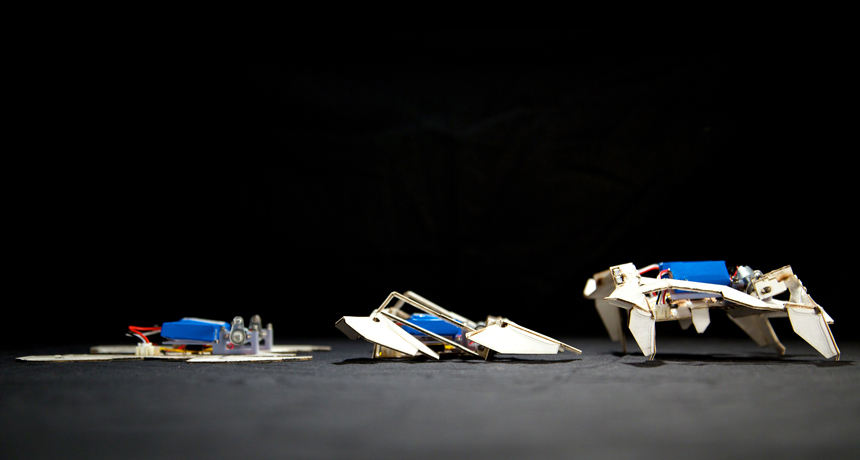Robots start flat, then pop into shape and crawl
Self-folding machines use heated hinges to transform

TRANSFORMER A flat robot about the size of an iPad mini and made mostly of paper and plastic can fold itself into a crawling machine.
Seth Kroll/Wyss Institute





